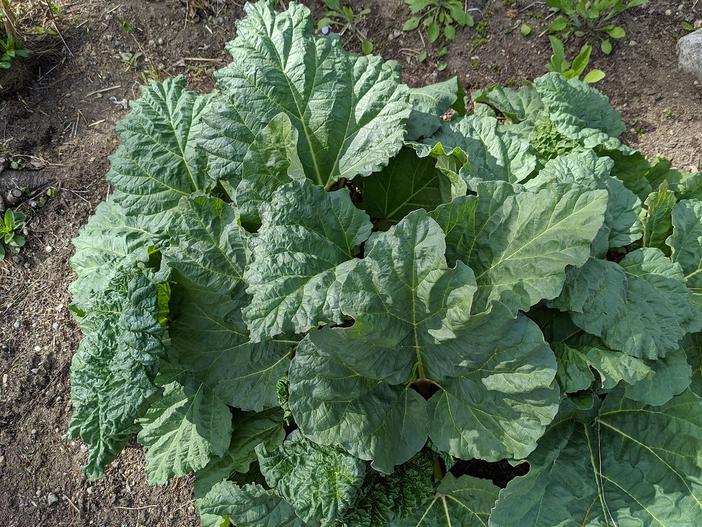Garden Rhubarb
(Rheum rhabarbarum)
Garden Rhubarb (Rheum rhabarbarum)
/
/

Under the same moon...
CC BY 2.0




































































Estimated Native Range
Summary
Garden Rhubarb thrives in cooler climates and is valued for its easy maintenance and culinary uses. It is often grown in vegetable gardens and is also suitable for border planting due to its large, decorative leaves. Garden Rhubarb requires full sun to part shade, consistent moisture, and well-drained soil with rich organic matter to produce the best stalks. It is important to note that only the stalks are edible; the leaves contain oxalic acid and are toxic if ingested. While it can be invasive in some regions, with a tendency to spread if not managed, it is generally not aggressive.CC BY-SA 4.0
Plant Description
- Plant Type: Herb
- Height: 5-7.5 feet
- Width: 5-6 feet
- Growth Rate: Moderate
- Flower Color: Green, White
- Flowering Season: Spring, Summer
- Leaf Retention: Deciduous
Growth Requirements
- Sun: Full Sun, Part Shade
- Water: Medium
- Drainage: Medium
Common Uses
Deer Resistant, Edible*Disclaimer: Easyscape's listed plant edibility is for informational use. Always verify the safety and proper identification of any plant before consumption., Low Maintenance, Rabbit Resistant
Natural Habitat
Native to the mountainous regions and grassy slopes in southern Siberia to north and central China
Other Names
Common Names: Pieplant, Rhubarb, Rabarber, Krauser Rhabarber, Österreichischer Rhabarber, Ruibarbo, Wineplant, Tarharaparperi, Rhubarbe, Rabarbaro
Scientific Names: , Rheum rhabarbarum, Rheum undulatum, Rheum franzenbachii, Rheum undulalum, Rheum macropterum, Rheum undulatum var. longifolium, Rhabarbarum verum, Rheum franzenbachii var. mongolicum, Rheum muricatum
GBIF Accepted Name: Rheum rhabarbarum L.